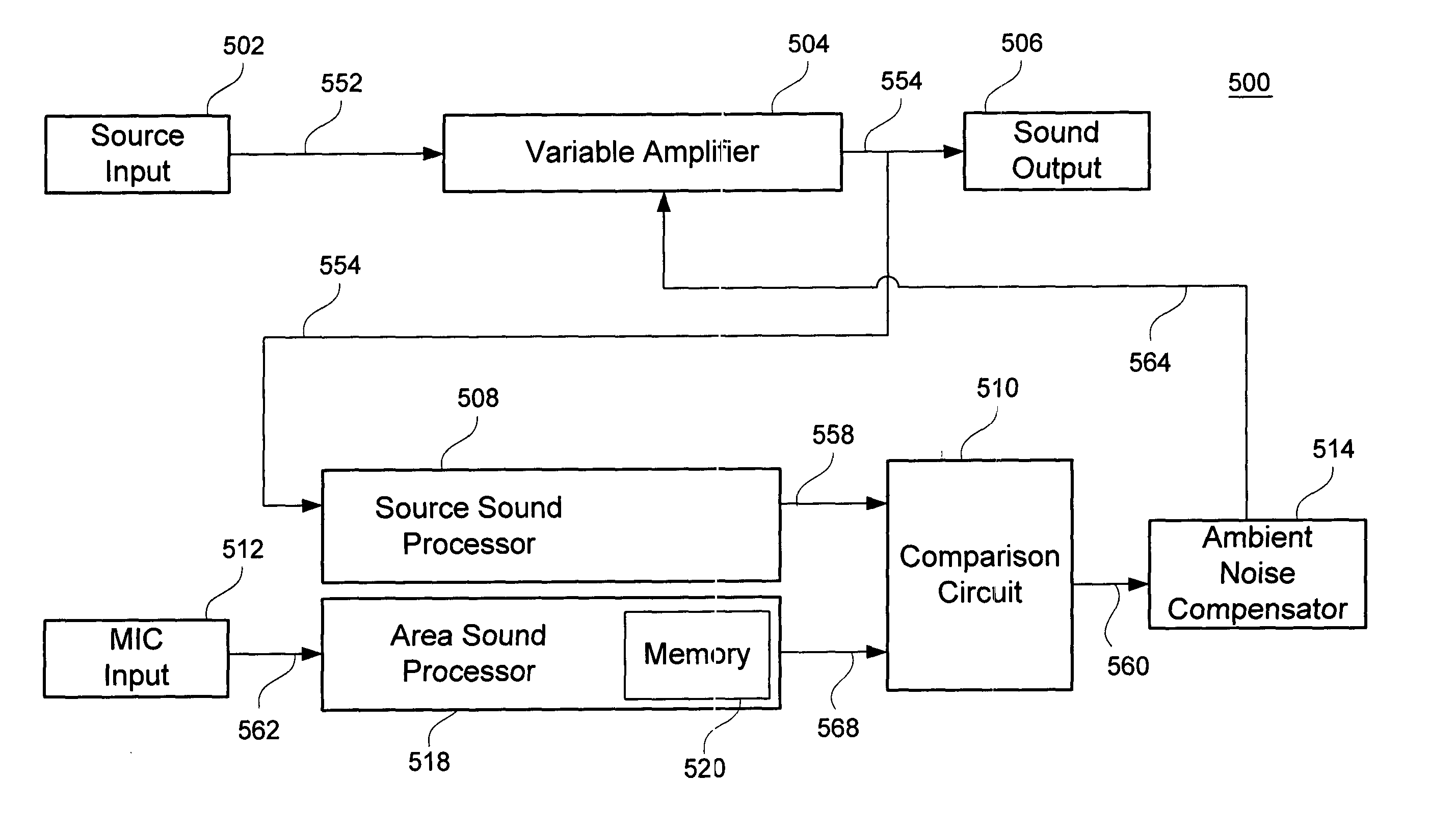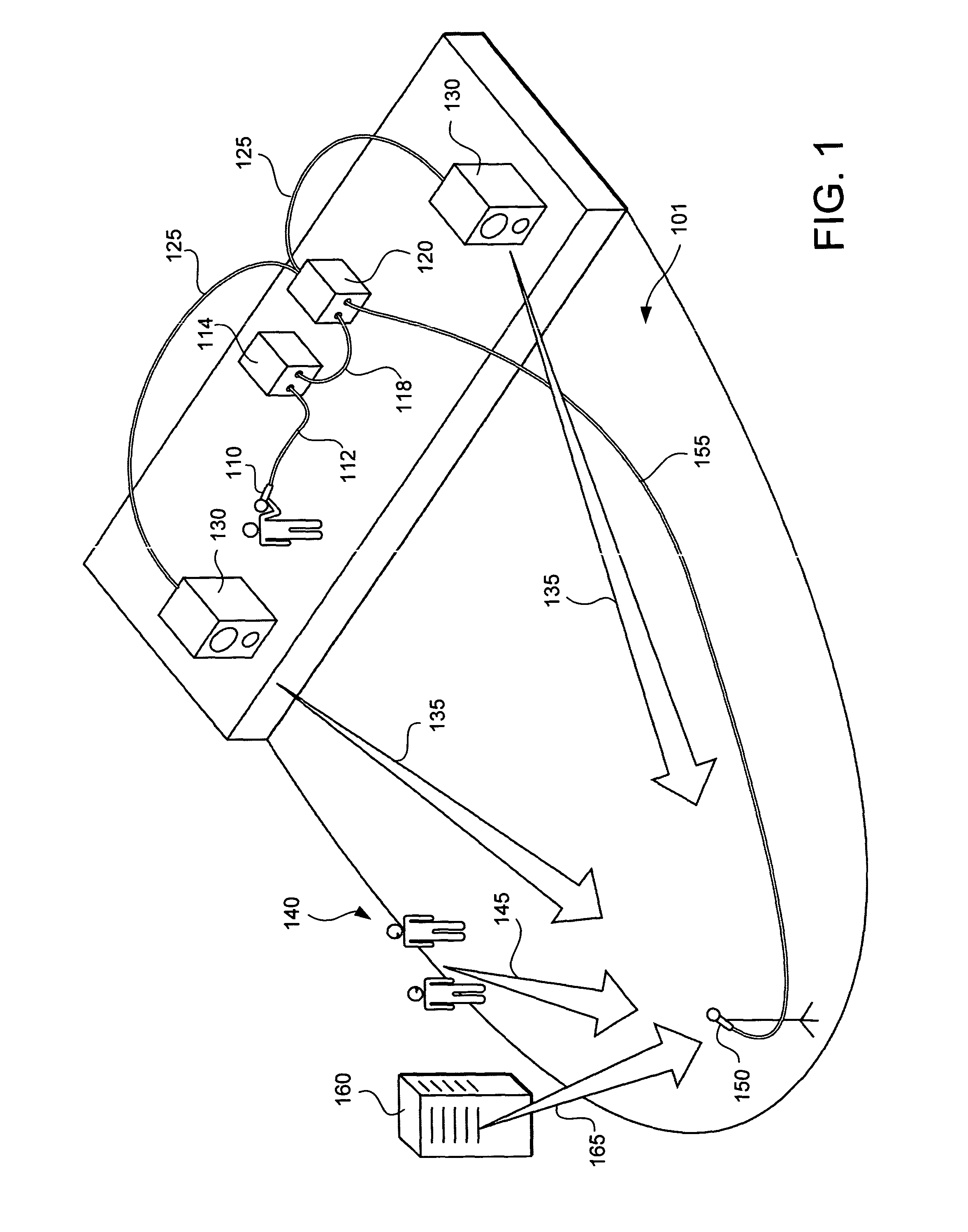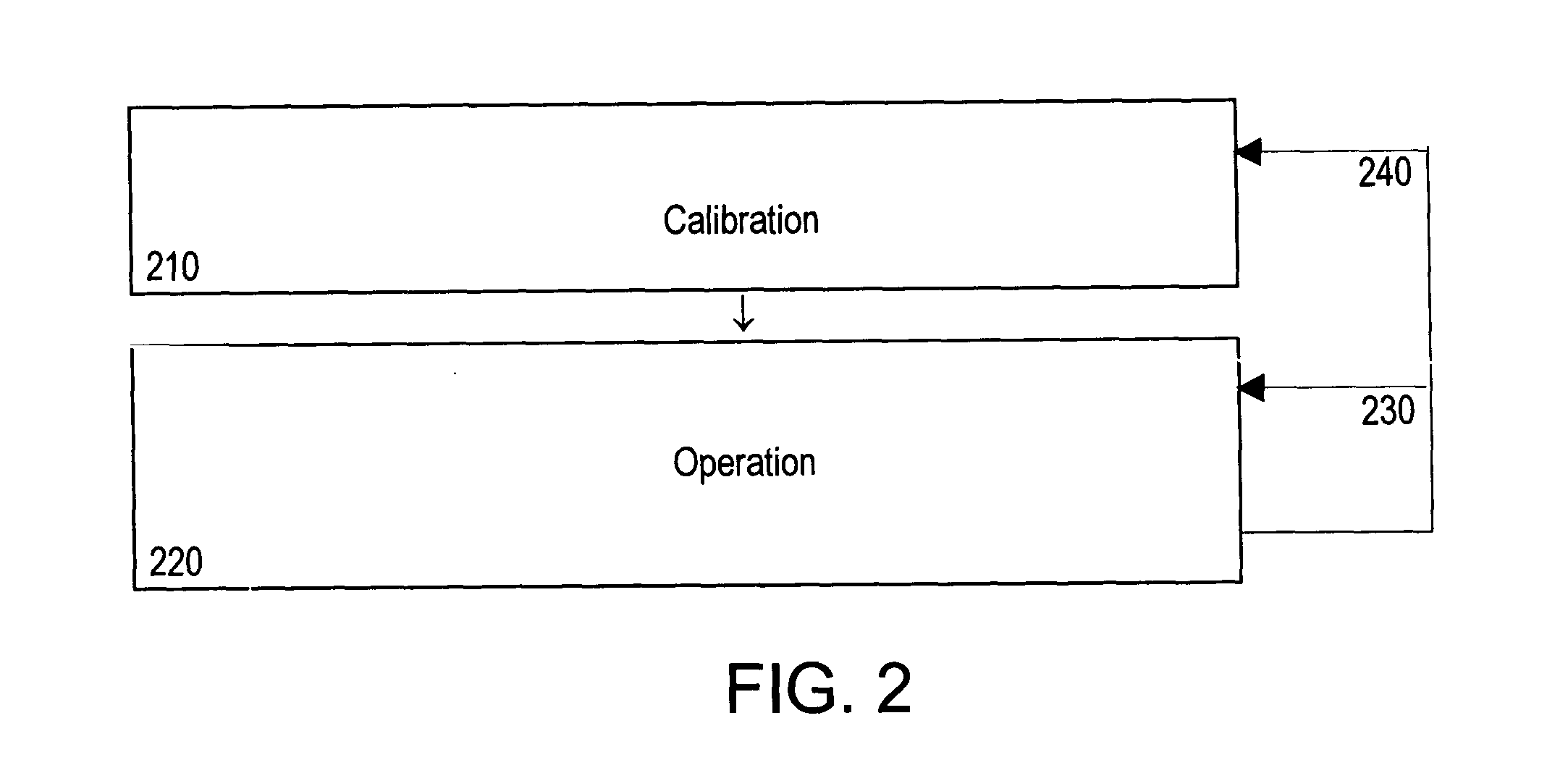Ambient noise sound level compensation
- Summary
- Abstract
- Description
- Claims
- Application Information
AI Technical Summary
Benefits of technology
Problems solved by technology
Method used
Image
Examples
Embodiment Construction
[0036] This disclosure presents methods and systems for controlling the level of a desired sound signal to compensate for noise in a listening area. The methods and systems measure the level of a monitoring signal, such as a microphone signal, that is a combination of a desired source sound and undesired noise, and then calculate a noise level by subtracting a source signal level from the microphone signal level. The analyses may be performed separately for separate frequency bands. The separate frequency bands may be analyzed in parallel or sequentially.
[0037]FIG. 1 depicts an environment in which an audio system projects sound waves that need to be audible over undesired environmental noise. A listening area 101 is shown as a space into which sound may be projected through speakers 130 for the benefit of an audience. The sound being projected is generated by an audio source 114, represented in the figure as an audio amplifier. Other possible sources 114 include a variety of audio...
PUM
 Login to View More
Login to View More Abstract
Description
Claims
Application Information
 Login to View More
Login to View More - R&D
- Intellectual Property
- Life Sciences
- Materials
- Tech Scout
- Unparalleled Data Quality
- Higher Quality Content
- 60% Fewer Hallucinations
Browse by: Latest US Patents, China's latest patents, Technical Efficacy Thesaurus, Application Domain, Technology Topic, Popular Technical Reports.
© 2025 PatSnap. All rights reserved.Legal|Privacy policy|Modern Slavery Act Transparency Statement|Sitemap|About US| Contact US: help@patsnap.com



